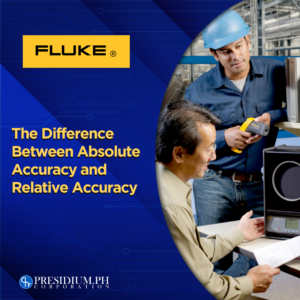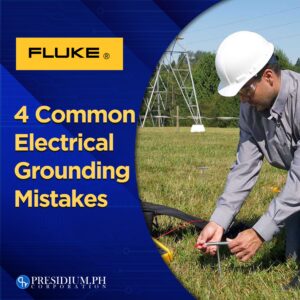Traditional Measurement Tools Vs. Digital Measurement Tools What’s Better?
We know what you’re thinking, we could always use a trusty old measuring tape, right? We’ll be frank, using digital distance meters can provide the most advanced functions in terms of measuring. With this, you can experience measuring with extreme accuracy and fewer hassles. Measuring is, after all, one of the most important parts of construction. Here, we’ll be discussing traditional measurement vs. digital measurement tools. What’s better? Let’s take a stroll, shall we?
Using Traditional Measurement Tools
We’ve all been through the tape measure phase aka, the use of traditional measurement. We’ve used it at least once in our lives and until this day, it proves to be very handy. People who are into DIY are probably going to be familiar with some basic tools and equipment used in construction. Of course, one of the most important parts of any project is measurements. Measurements bring the most out of the quality of the project. Let’s take a look at some of the traditional measuring tools.
What are the types of traditional measuring tools?
-
Ruler
One of the most common measuring tools in the market. Even kids are familiar with this one! It is easily understandable by displaying Inches on one side, and Centimeters on the other. It is used to measure small things and distances to produce accurate lines when drawing or simple geometry.
-
Tailor’s Measuring Tape
We practically have at least one inside our households. It is known for its soft and bendy nature. Because it is more gentle than most measuring devices, it is mostly used to measure a person’s body. It also holds simplistic designs with Inches on one side and Centimeter on the other.
-
Thermometers
There are two types of thermometers, one is the more traditional one which includes a glass tube, and inside, a hint of mercury. It’s what we put in our mouth or armpits when we get feverish. On the other hand, a modern type is a digital one that gets your temperature with a simple click of a button.
-
Caliper
These tools can accurately measure the distance between the two sides of an object. Let’s throw in a tree trunk as an example. Calipers have adjustable ends that can be put at both ends of a tree trunk, hence accurately measuring its width.
-
Micrometer
A similar device with the caliper, however, this one does not only measure both ends of an object, but it can also measure length, depth, and thickness on an object. If you know how to properly operate a micrometer they can also bring quality outputs in terms of measurements.
-
Square
Ironically, a “square” is a measuring tool that is not shaped like a square but is an “L” shaped device that is made up of two rulers that are fixed to make the perfect right angle.
-
Tape Measure
One of the most familiar measuring devices we know is a tape measure. Every homeowner probably has at least one in their toolkits. A simple yet very effective tool that can be used to measure the length, width, height, or depth of any object
Don’t get us wrong, even if we have advanced technology nowadays, some of these traditional measurement instruments are still widely saturated. They have gained their own reputation of being an effective tool in the world of construction or even in small to medium projects.
However, let’s take a quick look at the pros and the cons of using traditional measuring tools.
Pros:
- It has been tried and tested throughout the years and has gained its prominence of being one of the go-to’s of construction workers because of its reliable nature.
- Very easy to understand, these devices are spot-on.
- Budget-friendly.
- You can find them in hardware stores.
Cons:
- Might prove to be difficult to use in terms of environment (ex: it might prove to be difficult measuring in harsh weather conditions).
- Its uses are for specific purposes (unless you get creative).
- These tools are likely to be stored in unlikely places for tools making them lose some of their measuring potentials over time.
- There will be more manpower involved in using traditional tools.
Now let’s move on to the advanced devices to use for measurement.
Using Advanced Measurement Tools
While using traditional measuring tools has undeniable advantages, using advanced measurement devices can not only improve the quality of your work but the overall quality of your performance as well. Moreover, while traditional tools sport different instruments used for specific purposes, advanced measuring tools can have it all in one device.
Furthermore, have the enjoyment of working on different tasks with just one device. Think about it. You can actually gather more groundwork with its wide variety of functions. You get to conserve your energy since the device will be the one working for you (advanced technologies are always a good investment). Additionally, have your expectations exceeded once you use innovative devices that are designed to do more than what they are made for!
Fluke’s Laser Distance Meter
One of the most recognized devices out there for troubleshooting and measurement is Fluke Tools. One of these measuring devices is the Fluke Laser Distance Meter. We cannot deny that the Fluke Laser Distance Meters does exhibit sophisticated measuring techniques unlike any other. Take a look at this…
Some of its notable measuring abilities:
- Provides a compass “heading” for distance measurement
- Has easy-to-use addition and subtraction function
- Includes automated end-piece correction. When measuring from an edge or corner, a built-in sensor detects the position of this bracket and automatically changes the reference point.
- Provides audible keypad feedback
- Offers improved visibility with a bigger, 4-line backlit display
- Improved battery life of 5000 measurements with automatic shut-off feature
- Offers minimum/maximum tracking to measure the room’s diagonal and horizontal distance from a stable measurement point
- Allows mounting on a tripod for stable long distance measurements
- Includes stake out function for marking off defined measured lengths
- Strong environmental protection with IP54 (water spray and dustproof) sealing
On the other hand, let’s take a quick look at the pros and the cons of using advanced measuring tools.
Pros:
- Fluke’s laser pointer will provide extreme accuracy when it comes to measurements.
- It lets you measure distances even in harsh environmental surroundings since you don’t have to get close to them anymore.
- It has easy-to-read digital displays.
- They are light and easy to use.
- Have 100% straight accuracy. Don’t worry about it bending or swaying as traditional measurement tools do. You can’t get straighter than a beam of light (laser beam).
- They have warranties.
Cons:
- It is an investment so it does go at a hefty price.
- Sometimes they come off as “unnecessary” especially when you’re working on small (or medium) projects.
- They can also be a tad bit sensitive. This device needs very precise calibration for them to work properly.
Let’s wrap it up…
Now, we have the traditional measurement and the advanced technology measurement. What’s better? The answer is, it all depends on what you’re working at. If it’s a small home project then it’s better to use the trusty old measuring tapes. However, when you’re working on a bigger project, such as constructing a building, a house, a recreational center, museums, you name it, all the big shot construction work, then you might want to consider investing in high tech measuring devices such as Fluke Laser Distance Meters.
Get yours and more at: https://presidium.ph/



